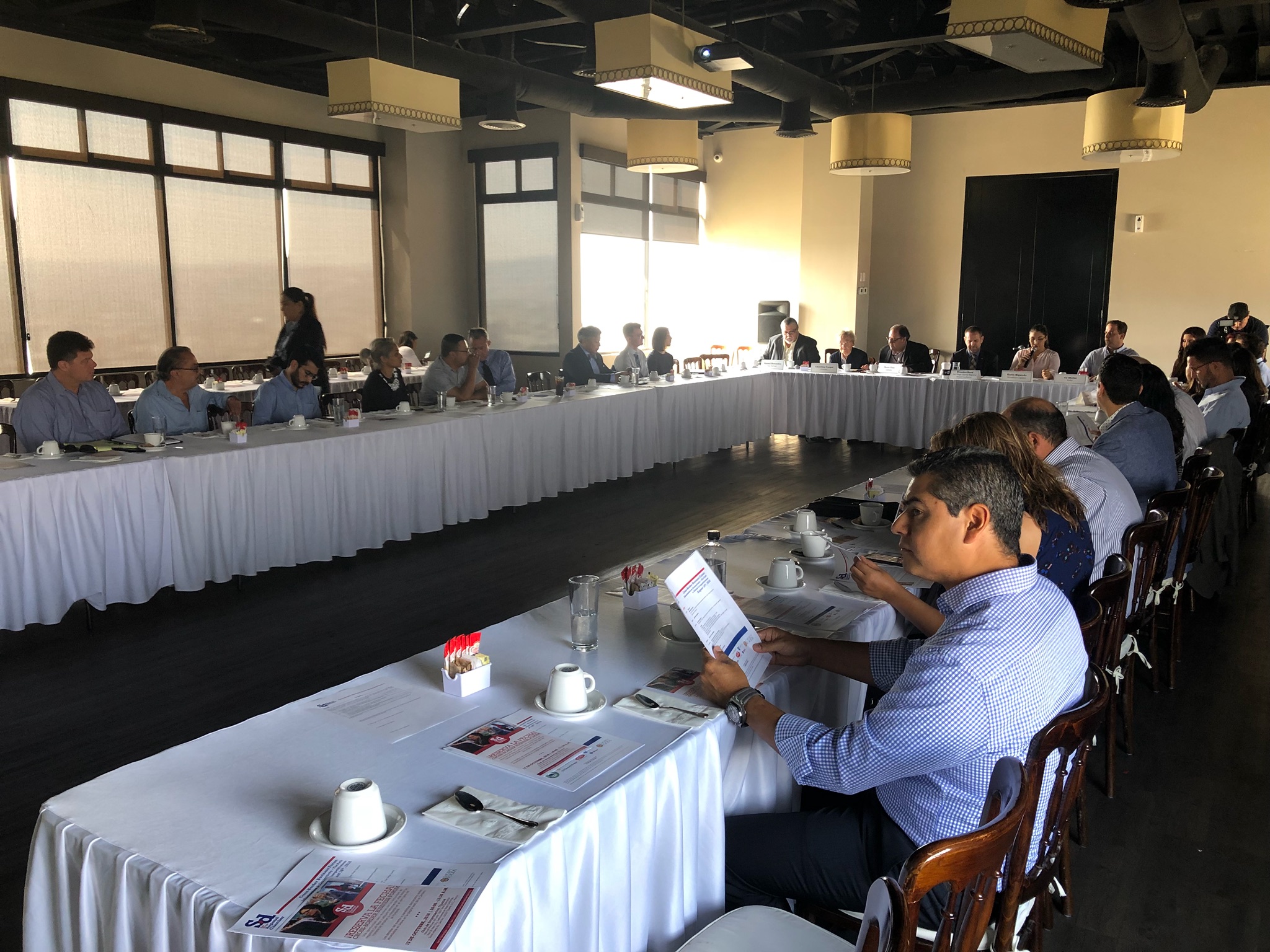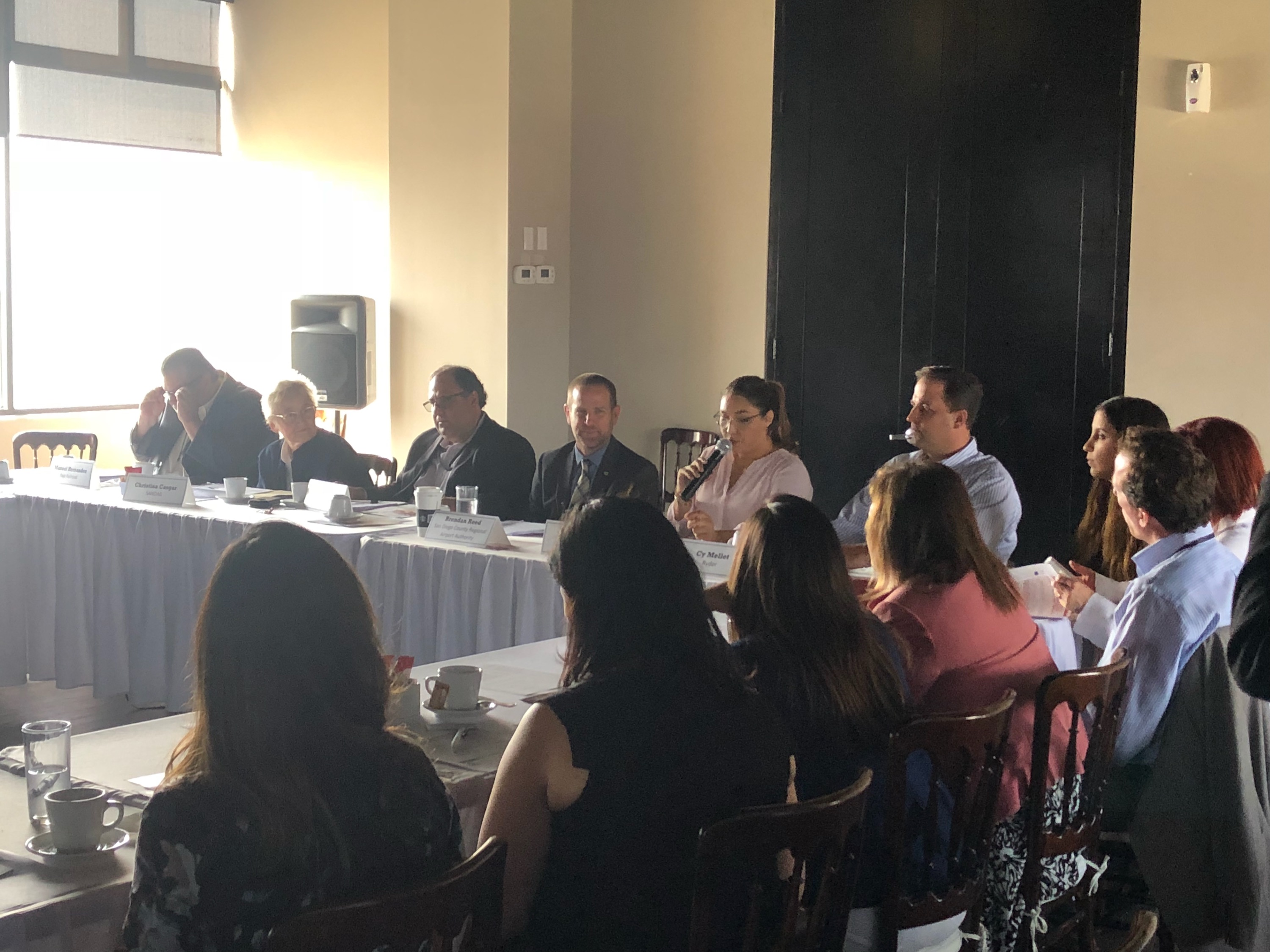August 16, 2018
Last week, the Chamber’s Cross Border Business Forum focused on our region’s infrastructure and connectivity and their contribution to Cali-Baja’s global competitiveness. With an integrated supply chain worth over $2.5B, a binational community and tourist destination, Cali-Baja relies on its connectivity to move people and goods by land, sea, and air. This connectivity is possible via the region’s three major international airports, two deep-sea commercial ports, rail connections, highways and six land ports of entry.

Speakers kicked off the roundtable discussion covering the transportation and infrastructure aspect of the goods movement, including opportunities to further increase connectivity and boost our binational economy. The conversation also addressed the challenges of keeping up with a growing population and economy, as well as reducing our carbon footprint while remaining globally competitive.
Brendan Reed, Director of Planning & Environmental Affairs at the San Diego County Airport Authority, shared that the airport has a $12M economic impact on our region and 118,000 direct and indirect jobs are supported by it. Through open communication with Caltrans and partnership with SANDAG, the airport contributes to San Diego’s transportation plans. Looking into the future, the airport is working towards integrating new technologies to increase connectivity which includes replacing Terminal 1 with a modern and efficient facility. “Keep in mind that on each commercial flight there is also cargo being transported all over the U.S. and abroad” he added, “this is something often being overlooked”.
Moving on to the truck industry, Ryder’s Business Development Manager, Cy Mellet, explained how the lack of certified drivers has become a major challenge for the industry and cross-border trade. When asked about automobile technology improvements and their impact on the trucking industry, he explained that a substantial subsidy would be needed before we see electric or driverless trucks. However, due to the lack of drivers, there soon will be a demand for other options. Manuel Hernandez, CFO of Baja Railroad, added that their services come in as an alternative that removes trucks from highways and can reduce the time it takes to move goods across the border.
Furthermore, the carbon footprint of rail transportation is less of that of the amount of trucks it would take to mobilize cargo long distances. “What we cannot compete against- he explained- is the trucks’ flexibility to cross the border back and forward more often and at any time”. Regarding the need of truck drivers, Mr. Mellet added that visas allowing Mexican drivers to work in U.S. territory and/or for U.S. companies could help the industry overcome this challenge.
Mario Orso, Trade Corridor Director at Caltrans, along with Christina Casgar, Goods Movement Policy Manager at SANDAG, both explained how these agencies work together in different projects enhancing San Diego’s connectivity and transportation. For example, they partnered with the City of San Diego and City of Chula Vista to create a pilot program for automated vehicles allowing companies to test drive and share information. Caltrans and SANDAG also collaborate on SR-11 and the Otay Mesa East Port of Entry, which is planned to be a toll facility connecting SR 905 and SR 125 to Corridor Tijuana-Rosarito 2000, further connecting with Ensenada and Tecate through Mexican federal highways. Mr. Orso highlighted the importance of advocacy efforts such as the Chamber’s delegation trips to Washington D.C. and Mexico City to share our region’s contribution to the economy of both countries, our region’s potential, and challenges that should be considered by decision makers.
To respond a question from our audience, speakers all shared how they each collaborate with the Mexican government, Tijuana Airport, and the State of Baja, joining forces to develop and implement transportation and infrastructure projects to further increase Cali-Baja’s connectivity and global competitiveness.
The Chamber’s next Cross-Border Business Forum will take place on October 17th, 10:00-11: 30 a.m., and will also be hosted at Club de Empresarios in Tijuana.
B
Mario Or